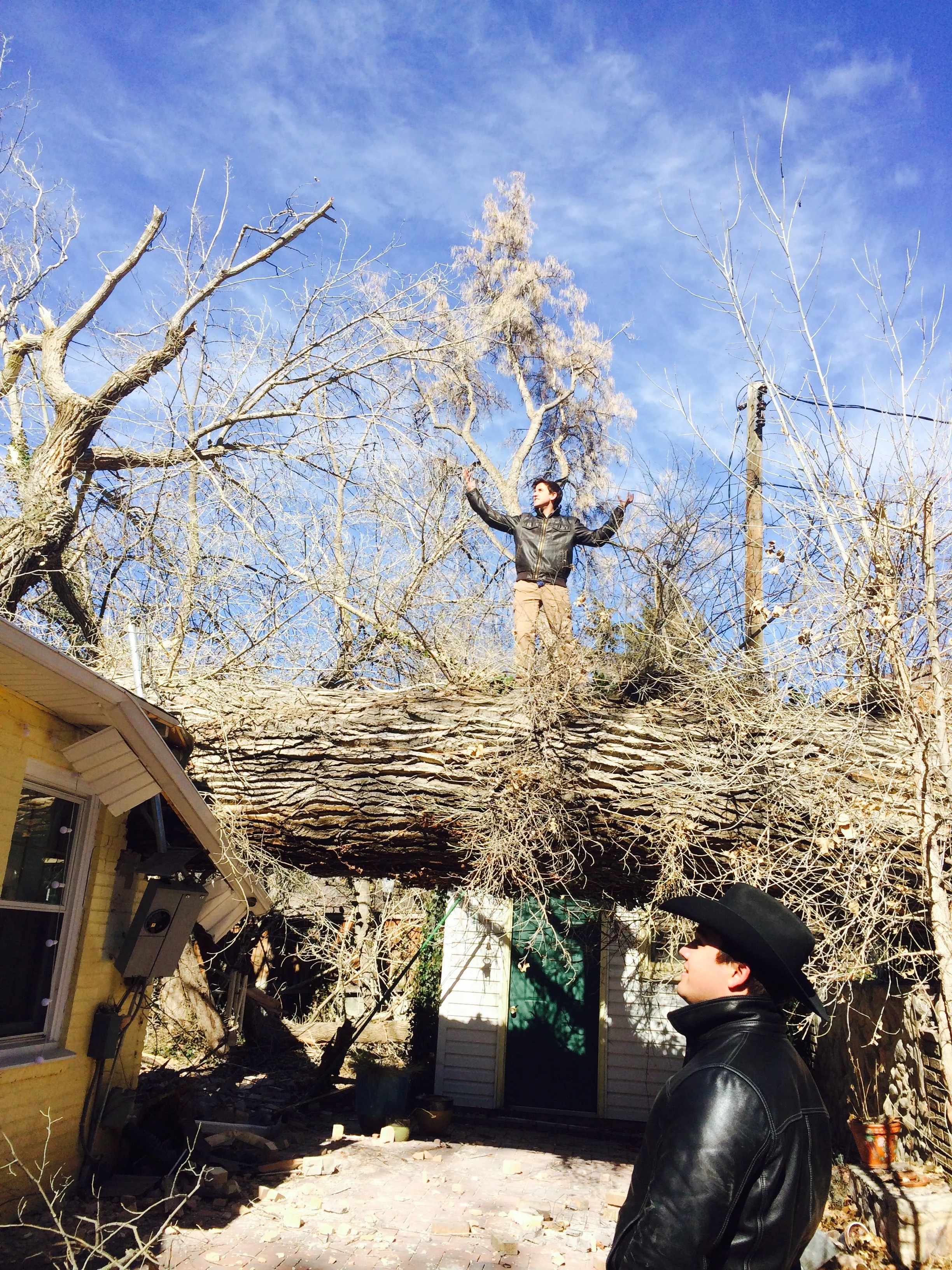Coming Home to Yourself
A little over ten years ago, a 120,000-pound Cottonwood tree fell on our house, demolishing the master bedroom, bathroom, attic, hallway, and half of the roof. On its way down, the tree also ripped out the power lines and smashed the electrical box, leaving us without power or heat—in the middle of February. Needless to say, we had to leave quickly.
We found temporary refuge first in a hotel, then in a series of VRBO rentals as reconstruction dragged on for months. What was supposed to be a brief displacement stretched into eight long months. My oldest son was a senior in high school; I had just gone part-time at work to be more present for my two adolescent boys. Suddenly, we were “homeless.”
I set out to create home wherever we landed. “Home is where the heart is,” I told myself—as long as we were together, that was home. I became the ground for my family: the place of safety, connection, love, and support. But underneath it all, I had lost my own footing.
Each new rental meant packing up, moving, and settling again. At first, we traveled light—just clothes, toiletries, the boys’ computers and schoolbooks, and our two dogs. But as weeks turned into months, our “necessities” grew: the gaming system, the Bluetooth speakers, a few good pots and pans. We craved the familiar comforts of home.
Meals, once an expression of our family’s love and rhythm, shifted to takeout. The hotel kitchen had no stove—just a microwave and a tiny fridge—so we ate out a lot. Chik-fil-A breakfasts, sushi dinners, plastic forks and paper napkins. The small rituals that used to anchor us—home-cooked meals, our favorite mugs, our cozy beds—were gone. I learned quickly that a sharp knife was a necessity for sanity. At least I could slice fruit and vegetables, keeping some small thread of normalcy alive.
But internally, I was unmoored. Even though we were all under one roof, I felt like I was drifting at sea. The experience gave me a deep compassion for people living without shelter. I understood for the first time how profoundly ungrounding it is to not have a place to land, to rest, to be.
When our house was finally rebuilt, the day we moved back in felt miraculous. Walking through the door, surrounded once again by our familiar furniture, photos, and art, I felt that deep, wordless joy: I’m home.
This experience taught me something powerful. Just as we can lose our physical home, we can also lose our inner one. We can become so focused on the external—work, responsibilities, relationships, the endless doing—that we forget how to inhabit ourselves.
What does it mean to come home to yourself?
It begins with stopping. With noticing. With feeling the simple aliveness of your body—the weight of your body on the surface you are resting upon, the texture of fabric against your skin, the rhythm of your breath. It’s sitting with yourself, not trying to fix or change anything, but simply being. When your mind wanders, you gently return—again and again—to the breath, the body, the now.
This is the inner version of turning the key and stepping through your own front door. That feeling of relief, belonging, safety—it’s available inside you, anytime.
Yoga Nidra: The Art of Restful Homecoming
One of the most beautiful practices I’ve found for “coming home” is Yoga Nidra, or yogic sleep. It’s a guided meditation that invites you to rest deeply while remaining aware—a kind of conscious relaxation that takes you beneath the surface of ordinary thinking.
As you’re guided through your body and breath, layer by layer, the mind softens, and the nervous system resets. In that space between waking and sleep, you reconnect with the part of yourself that is always steady, always whole. After a session, it often feels as though your body has exhaled for the first time in ages—you’re back home, in yourself.
Hypnosis: Rewriting the Inner Story
Similarly, hypnosis offers another doorway home. Contrary to the old myths, hypnosis isn’t about losing control—it’s about regaining it. It helps quiet the conscious chatter and reach the subconscious mind, where old patterns and beliefs live.
Through guided imagery and suggestion, hypnosis can help you release stories of fear, unworthiness, or restlessness—the mental “debris” that keeps you from feeling at home within yourself. When those old scripts dissolve, what remains is presence, peace, and an authentic connection to your inner truth.
Coming Home, Again and Again
Both Yoga Nidra and hypnosis remind us of something simple yet profound: home is not a place—it’s a state of being. It’s the feeling of being safe in your own skin, comfortable with your thoughts, at ease in your breath.
Just like the physical act of returning home after being away, coming home to yourself is something you practice—again and again—until it becomes second nature. You begin to notice when you’re “out of the house,” so to speak, lost in thought or anxiety. And you learn to return gently: Oh, I’ve forgotten. Time to come home.
Because in the end, no matter where life takes us—through loss, change, or chaos—the most profound comfort we can find is within.
Come home to yourself. You’ve been waiting for you all along.
